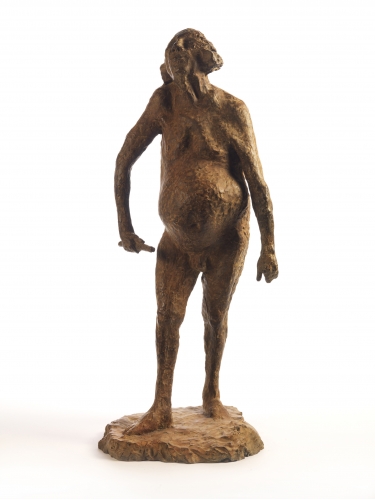
Revitalism
British sculpture & works on paper from the 1950’s and '60’s
3rd November - 12th December 2008
The group of post war British sculptors who came to prominence through the sheer vitality and power of their sculpture is once again the subject of our exhibition. Sculpture of the 1950’s and 60’s is currently enjoying a renaissance and books films and exhibitions are rediscovering for a new audience just how good these artists actually are, with auction houses regularly achieving record prices for their work. This is due in part to a 30 year hiatus in popularity as sculpture through the 70’s, 80’s and 90’s left the figure and plinth behind for a more cerebral and minimalist grammatical language. The huge fame enjoyed for a brief 20 years or so by Armitage, Butler, Chadwick and their contemporaries is now being placed in its social and art historical context.
Most of these sculptors had direct experience of the war and had faced the intensity of life or death situations. All had relied on the camaraderie of their fellow men to overcome real fear and as a result often knew true heroism. Such emotion, bottled up for the duration of the war, finally found expression in the euphoria of peace. Unconventional methods of sculpture-making brought forth new imagery of the figure. Raw emotion, sometimes too strong for the human form, revealed itself in ragged beasts or shattered birds, their shapes evolved from military hardware or aeroplane wings. Amongst the dynamism of explosive anger or armoured defence came images of great pathos and tenderness, even joy and humour.
These artists were not a formal group, they shared no manifesto, they were all individuals. Each found a language of their own through modelling, carving or construction, to express in three-dimensional form some of the most intensely emotional sculpture of any age. The vital energy that courses through their rugged surfaces drew us magnet-like to sculpture from an early age. That attraction remains as powerful now as it was back in the 1960’s, a testament to the last age where experience was always firsthand rather than through the medium of the TV screen.
Photographs by Steve Russell

